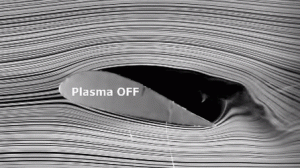Most people might never have thought about this, but there is a lot of junk in space, orbiting Earth. According to the Royal Institution in London, there are about 20,000 pieces of tracked space debris, ranging from larger than an apple to as big as a school bus. There are far more objects smaller than that, including millions of pieces of debris too tiny to track. While some of this is from natural sources, most of it has been put into orbit by humans, from old space missions to decommissioned satellites. This junk puts other satellites and astronauts at risk from collisions. The Kessler syndrome is a proposed scenario that relates to this. It basically states that there might come a time when the density of space junk might be so high that collisions between the orbital debris might start a chain reaction which could quickly get out of control and destroy most of the current satellites and make launching new ones almost impossible.
To deal with this problem, the Japan Aerospace Exploration Agency has launched a satellite, the Kounotori 6, with a cable that’s as long as six football fields into orbit — and when it’s deployed, it’ll test an idea to knock out orbital debris.
 Reels aboard the Kounotori 6 craft will deploy the 700-meter (2,296 feet) tether, essentially unspooling a clothesline in space that could help clean up the pieces of potentially hazardous space debris that are tracked by systems on Earth. The Kounotori’s cable is a promising candidate to deorbit the debris objects at low cost.
Reels aboard the Kounotori 6 craft will deploy the 700-meter (2,296 feet) tether, essentially unspooling a clothesline in space that could help clean up the pieces of potentially hazardous space debris that are tracked by systems on Earth. The Kounotori’s cable is a promising candidate to deorbit the debris objects at low cost.
As illustrated by a video, the Japanese agency’s plan is to use the electrified tether, counter-weighted by a 20 kilogram (44-pound) end mass, to slow down and redirect space junk into a safe but fiery reentry into the atmosphere.
According to the video, the tether will be able to change its position relative to the Kounotori craft by the use of force that’s generated by an electric current and the Earth’s magnetic field. The video also depicts the tether being attached to a large piece of debris so the space trash can be guided down into a destructive reentry.
According to JAXA, the Kounotori is scheduled to dock at the International Space Station on Dec. 14; the tether won’t be unleashed until the Kounotori leaves the space station bearing a new cargo of waste and after the test, the entire craft will burn up on reentry.
Sources:
media.npr.org/assets/img/2016/12/09/tether_wide7df993d119ce90551d025d339eae7818a9df96e7-s1600-c85.jpg
www.space.com/24325-japan-space-junk-tether.html




 would be able to journey towards the stars. While studying comets, Kepler made an observation that intrigued him a lot. He observed that the tails of comets were always turned to a side as if blown there by the wind. He hypothesized that there was a “solar wind” blowing in space which caused this phenomenon to occur. He further proposed a plan to use this solar wind to propel space crafts in space much like sails on traditional sail boats.
would be able to journey towards the stars. While studying comets, Kepler made an observation that intrigued him a lot. He observed that the tails of comets were always turned to a side as if blown there by the wind. He hypothesized that there was a “solar wind” blowing in space which caused this phenomenon to occur. He further proposed a plan to use this solar wind to propel space crafts in space much like sails on traditional sail boats.